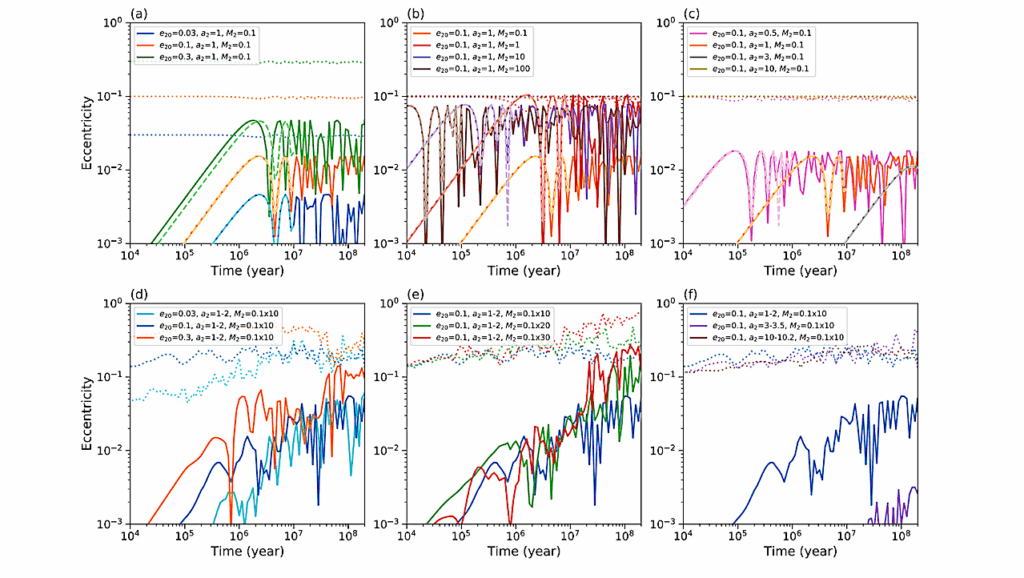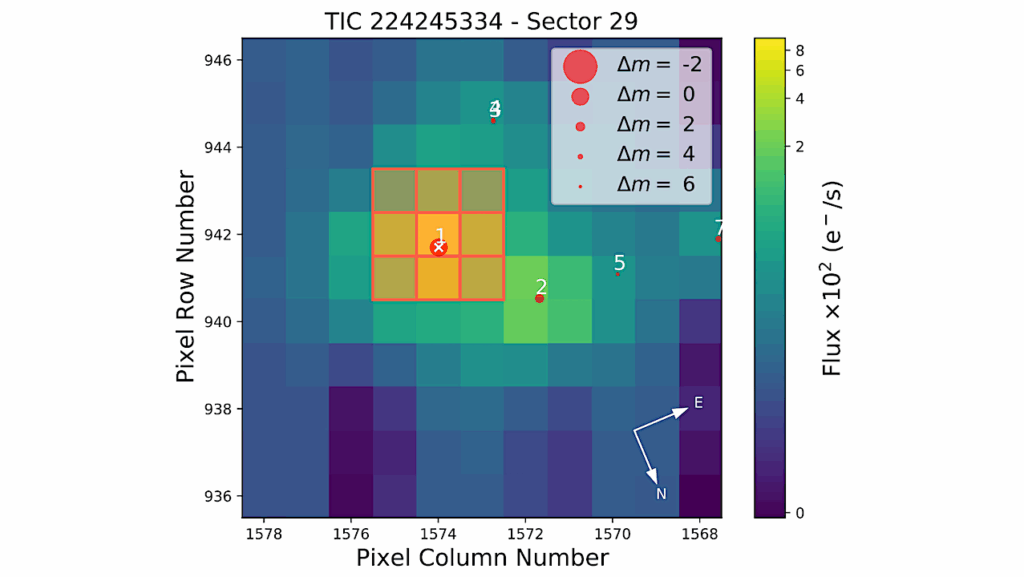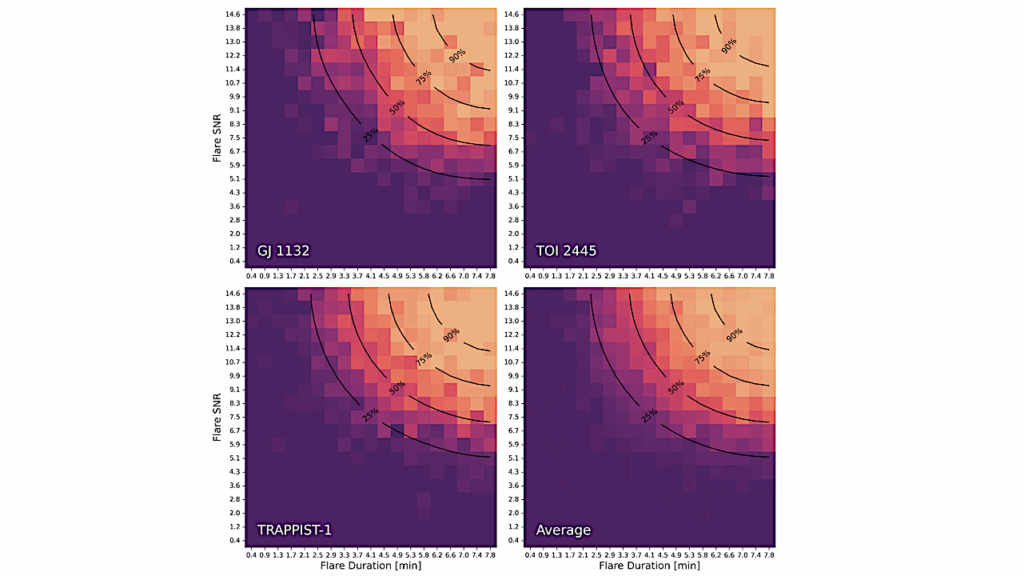Discovery Of A Directly Imaged Planet To The Young Solar Analog YSES 2

By selecting stars with similar ages and masses, the Young Suns Exoplanet Survey (YSES) aims to detect and characterize planetary-mass companions to solar-type host stars in the Scorpius-Centaurus association.
Our survey is carried out with VLT/SPHERE with short exposure sequences on the order of 5 min per star per filter. The subtraction of the stellar point spread function (PSF) is based on reference star differential imaging (RDI) using the other targets in the survey in combination with principal component analysis.
We report the discovery of YSES 2b, a planetary-mass companion to the K1 star YSES 2 (TYC 8984-2245-1). The primary has a Gaia EDR3 distance of 110 pc, and we derive a revised mass of 1.1M⊙ and an age of approximately 14 Myr. We detect the companion in two observing epochs southwest of the star at a position angle of 205∘ and with a separation of ∼1.05″, which translates to a minimum physical separation of 115 au at the distance of the system. We derive a photometric planet mass of 6.3+1.6−0.9MJup using AMES-COND and AMES-dusty evolutionary models; this mass corresponds to a mass ratio of q=(0.5±0.1)% with the primary. This is the lowest mass ratio of a direct imaging planet around a solar-type star to date.
We discuss potential formation mechanisms and find that the current position of the planet is compatible with formation by disk gravitational instability, but its mass is lower than expected from numerical simulations. Formation via core accretion must have occurred closer to the star, yet we do not find evidence that supports the required outward migration, such as via scattering off another undiscovered companion in the system. YSES 2b is an ideal target for follow-up observations to further the understanding of the physical and chemical formation mechanisms of wide-orbit Jovian planets.
Alexander J. Bohn, Christian Ginski, Matthew A. Kenworthy, Eric E. Mamajek, Mark J. Pecaut, Markus Mugrauer, Nikolaus Vogt, Christian Adam, Tiffany Meshkat, Maddalena Reggiani, Frans Snik
Abbreviated.
Comments: Accepted for publication in A&A (15 pages, 7 figures, 5 tables)
Subjects: Earth and Planetary Astrophysics (astro-ph.EP); Instrumentation and Methods for Astrophysics (astro-ph.IM); Solar and Stellar Astrophysics (astro-ph.SR)
Journal reference: A&A 648, A73 (2021)
DOI: 10.1051/0004-6361/202140508
Cite as: arXiv:2104.08285 [astro-ph.EP] (or arXiv:2104.08285v1 [astro-ph.EP] for this version)
Submission history
From: Alexander Bohn
[v1] Fri, 16 Apr 2021 18:00:01 UTC (7,599 KB)
https://arxiv.org/abs/2104.08285
Astrobiology








